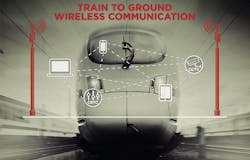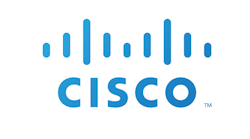Anyone who rides public transportation, whether it’s trains, subways, or other modes of transport, understands that Wi-Fi access while on board these systems doesn’t always work.
Wi-Fi on public transportation systems has had a bit of a history and even a reputation for being unreliable, spotty or just unavailable altogether.
That’s why Fluidmesh Networks and Cisco introduced a joint wireless solution to bring Wi-Fi access to passenger trains, metros and rail operators. The solution is designed to help put an end to the frustrating and widespread problem of sporadic on-board Wi-Fi and facilitate on-board video security, infotainment, ticketing and vehicle diagnostics.
The collaboration between Fluidmesh and Cisco is the result of months of in-depth field testing on trains and locomotives that certified the performance of the Cisco Connected Rail solution in conjunction with Fluidmesh train-to-ground wireless technology. Fluidmesh patented fast-roaming Multiprotocol Label Switch (MPLS) trackside technology that can deliver more reliable Wi-Fi to trains.
It is one of the first technologies already deployed along high speed railroad with trains travelling at 300 Km/h as described in the paper we published at the latest Word Congress on Railway Research (WCRR) in May 2016. Together, Cisco and Fluidmesh can offer rail and transit operators an opportunity to deliver a next generation passenger experience.
“The Fluidmesh Cisco collaboration has provided us with a high level of comfort and expertise that has sparked continual innovation within US freight railroad operations, the knowledge that these manufacturers are bringing the best solutions to the market is a clear advantage,” adds Mark Mills, CEO of Communication Concepts, a Fluidmesh and Cisco partner integrating solutions for Class 1 freight railroads in the US.
Riding in to Safety and Satisfaction
Ridership, safety, and tighter operating budgets are pushing rail operators and mass transit agencies to deliver Wi-Fi on their trains. Such a trend is creating an opportunity for the rail industry that Cisco estimates to exceed $27B in the next 15 years through increased ridership, economic and safety benefits.
Passenger satisfaction today is directly correlated to their productivity during their journeys. Therefore, on-board Wi-Fi has become a priority for most passengers. Furthermore, the recent acts of terrorism on passenger trains make security a major worldwide concern and are driving demand for real-time video to be available on all transit systems.
Connected trains are safer trains because the ground staff can be made aware of potential on-board threats or dangerous situations. On-board connectivity is also creating an opportunity to improve railways and their rolling stock operations. By installing sensors and pervasive networking capabilities, train operators can run more efficiently thus reducing their operating costs.
“Cisco’s goal is to provide broadband connectivity to railways, and we have found in Fluidmesh technology the most advanced solution for continuous broadband train-to-ground communication,” said Barry Einsig, global transportation executive, Cisco. “The Cisco Connected Rail solution, in conjunction with Fluidmesh trackside wireless technology, brings Wi-Fi to passengers, improving their experience as travelers and commuters.”
Reliable Wi-Fi on trains is the linchpin to revolutionize the passengers’ experience and to drive ridership towards the rail service. We are excited to have collaborated with Cisco to help end unreliable and frustrating on-board Wi-Fi service.
Cosimo Malesci, Fluidmesh EVP sales, said, “Historically, on-board Wi-Fi on mass transit has been a challenging problem. We have spent the last five years developing an innovative technology to solve it. Collaborating with Cisco allows Fluidmesh to provide a complete end-to-end solution for the connectivity needs of mass transit agencies and rail operators. We are excited about the opportunity it generates worldwide.”
Andrea Orioli, Fluidmesh VP Operations added, “Fluidmesh has been successfully deployed along the Italian high-speed railroad in late 2015 and it is today one of the only wireless technologies proven to work at speeds exceeding 300 Km/h as our CEO Umberto Malesci presented at the World Congress on Railway Research (WCRR) in Milan, Italy.”
By Umberto Malesci, Fluidmesh CEO and co-founder.




